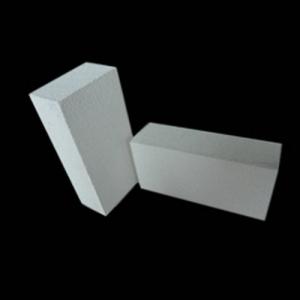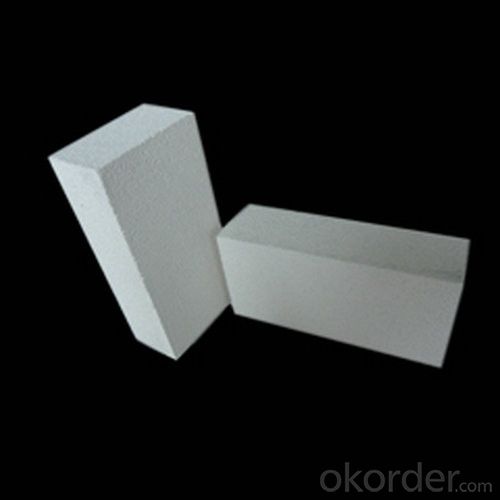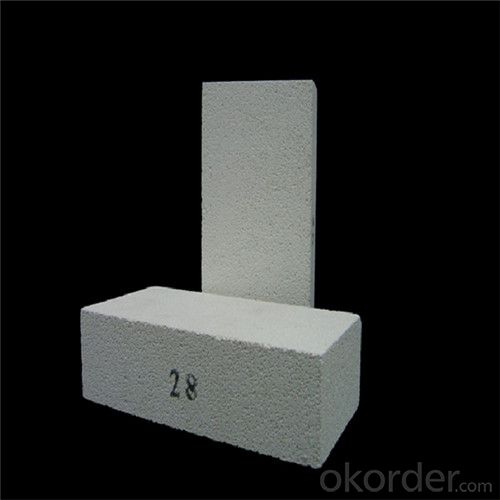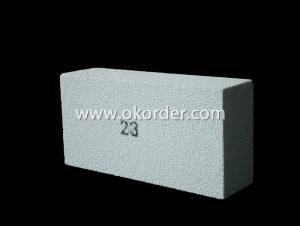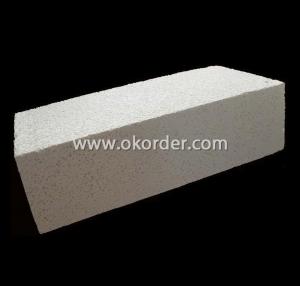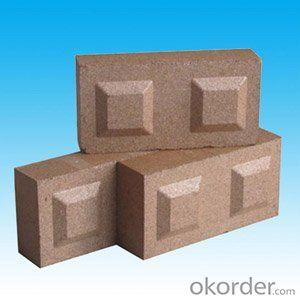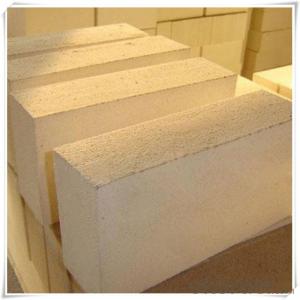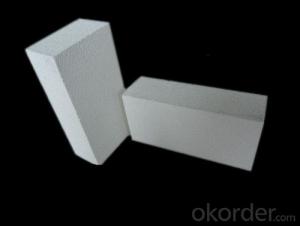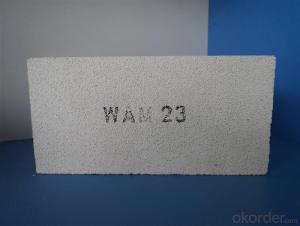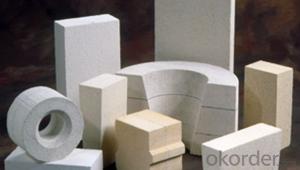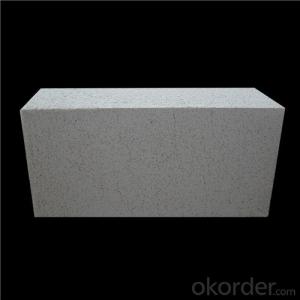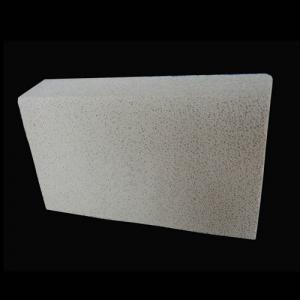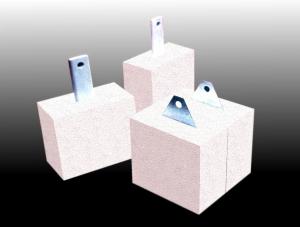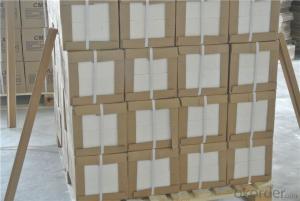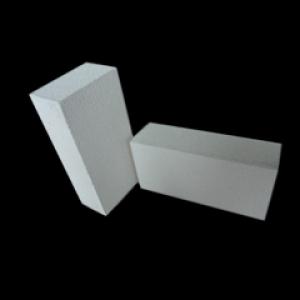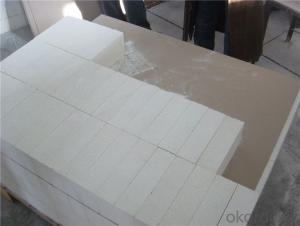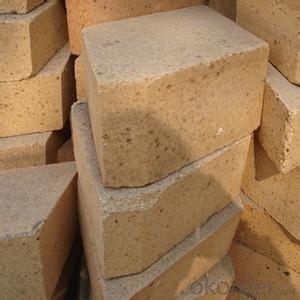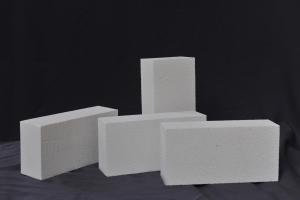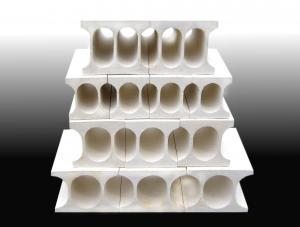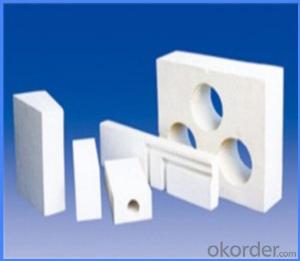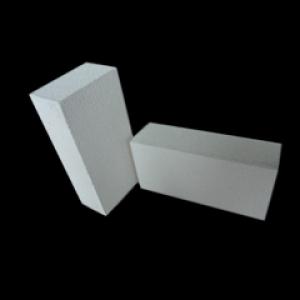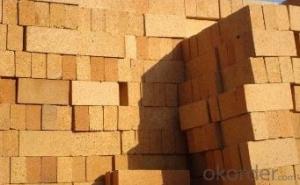Insulating Fire Brick - GJM Insulation Brick Insulating Brick
- Loading Port:
- Shanghai
- Payment Terms:
- TT or LC
- Min Order Qty:
- 1000 pc
- Supply Capability:
- 100000000 pc/month
OKorder Service Pledge
OKorder Financial Service
You Might Also Like
General information of Insulating Brick
Insulating firebricks are classified under tempera-ture between 1100C to 1700C, manufactured from high purity alumina clay.
Insulating fire bricks are made from high purity alumina and low iron content raw materials. The insulating fire bricks are produced by mixing, casting or extruding, drying, sintering and grinding. Our insulating fire bricks GJM23 temperature is 1260℃(2300℉). A variety of type could be done according to customer’s request.
To make our firebricks more energy and cost effective, we have different manufacturing methods for our insulating fire bricks casting and extruding method.
For insulating fire bricks GJM23,we choose the casting methord.The casting insulating fire bricks offering the lowest density, the lowest thermal conductivity for the application above 1000℃.
Application of Insulation brick
Insulating firebricks can be used as a hot face lining directly exposed to the heat or as a backup insulation layerin iron and steel mills, non-ferrous foundries, petrochemical, ceramic, glass.
Features of Insulation brick
◆Light weight and low thermal conductivity
◆Low heat storage
◆Low iron and impurities
◆High thermal shock resistance
Technical Data of GJM series Insulation brick
| JM23 | JM26 | JM28 | JM30 | JM32 | ||||
| Physical Properties: | ||||||||
| Classifiction Temperature | ℃ | 1260.0 | 1430.0 | 1500.0 | 1600.0 | 1650 | ||
| Density | Kg/m3 | 550.0 | 850.0 | 900.0 | 1000.0 | 1100 | ||
| Cold Crushing Strength | Mpa | 1.2 | 2.0 | 2.5 | 2.8 | 3.5 | ||
| Reheating Linear Change(24hrs) | ||||||||
| 1230℃ | % | 0.4 | ||||||
| 1300℃ | ||||||||
| 1400℃ | % | 0.5 | ||||||
| 1510℃ | % | 0.6 | ||||||
| 1600℃ | % | 0.7 | ||||||
| 1650℃ | % | 0.8 | ||||||
| Hot Load Strength Deform(90 minutes) | ||||||||
| 1100℃ at 0.034 Mpa(5psi) | % | 0.1 | ||||||
| 1260℃ at 0.069 Mpa(10psi) | % | 0.2 | ||||||
| 1320℃ at 0.069 Mpa(10psi) | % | 0.3 | ||||||
| 1370℃ at 0.069 Mpa(10psi) | % | 0.2 | 0.1 | |||||
| Thermal Conductivity | ||||||||
| 400℃ | W/m.k | 0.2 | 0.3 | 0.3 | 0.3 | 0.32 | ||
| 600℃ | W/m.k | 0.2 | 0.3 | 0.3 | 0.3 | 0.35 | ||
| 800℃ | W/m.k | 0.2 | 0.3 | 0.4 | 0.4 | 0.38 | ||
| 1000℃ | W/m.k | 0.2 | 0.3 | 0.4 | 0.4 | 0.42 | ||
| 1200℃ | W/m.k | 0.4 | 0.4 | 0.4 | 0.44 | |||
| 1400℃ | W/m.k | |||||||
| Specific Heat | KJ/Kg.K | 1.1 | 1.1 | 1.1 | 1.1 | 1.10 | ||
| Chemical Analysis: | ||||||||
| Al2O3 | % | 47.0 | 50.0 | 60.0 | 70.0 | 75.0 | ||
| SiO2 | % | 44.4 | 47.1 | 38.2 | 28.3 | 23.2 | ||
| Fe2O3 | % | 0.9 | 0.7 | 0.6 | 0.5 | 0.5 | ||
| TiO2 | % | 1.2 | 0.1 | 0.1 | 0.1 | 0.1 | ||
| CaO | % | 5.2 | 0.1 | 0.1 | 0.1 | 0.1 | ||
| MgO | % | 0.3 | 0.2 | 0.1 | 0.1 | 0.1 | ||
| Na2O+K2O | % | 1.1 | 1.7 | 0.8 | 0.7 | 0.6 | ||
Technical Data of B series Insulation Brick
| B-1 | B-2 | B-3 | B-4 | B-5 | B-6 | B-7 | ||||
| Physical Properties: | ||||||||||
| Density | g/cm3 | 0.7 | 0.7 | 0.75 | 0.80 | 0.80 | 0.90 | 1.00 | ||
| Cold Crushing Strength | Mpa | 2.5 | 2.5 | 2.5 | 2.5 | 2.5 | 3.0 | 3.0 | ||
| Thermal Conductivity 350℃ | W/m.k | 0.17 | 0.18 | 0.20 | 0.22 | 0.23 | 0.27 | 0.31 | ||
Technical Data of C series Insulation Brick
| C-1 | C-2 | C-3 | ||||
| Physical Properties: | ||||||
| Density | g/cm3 | 1.1 | 1.2 | 1.3 | ||
| Cold Crushing Strength | Mpa | 5.0 | 7.0 | 10.0 | ||
| Thermal Conductivity 350℃ | W/m.k | 0.30 | 0.38 | 0.45 | ||
Photo of Insulation Brick
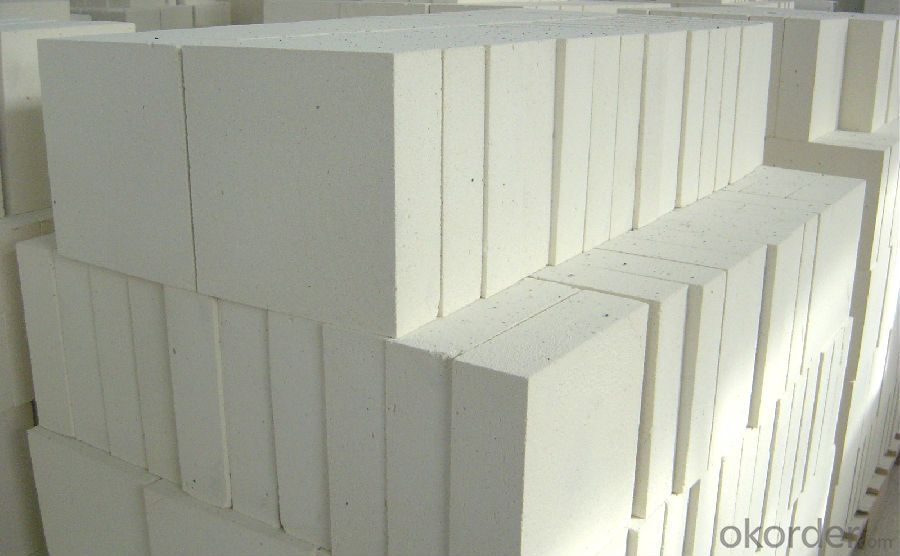
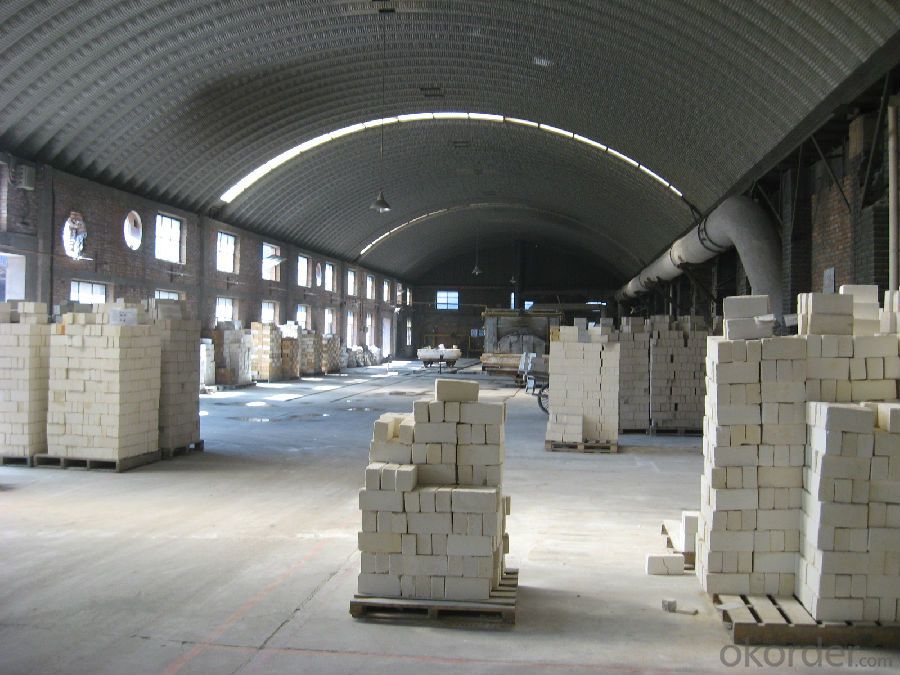
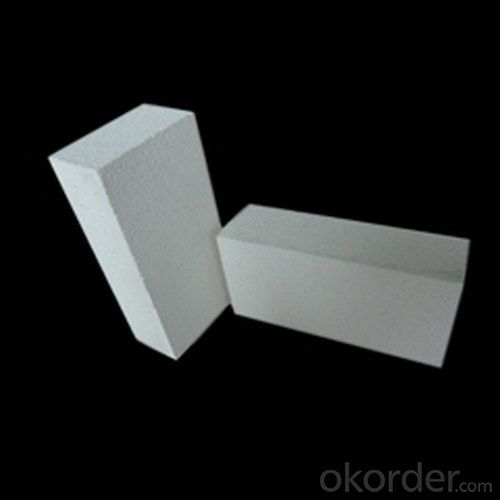
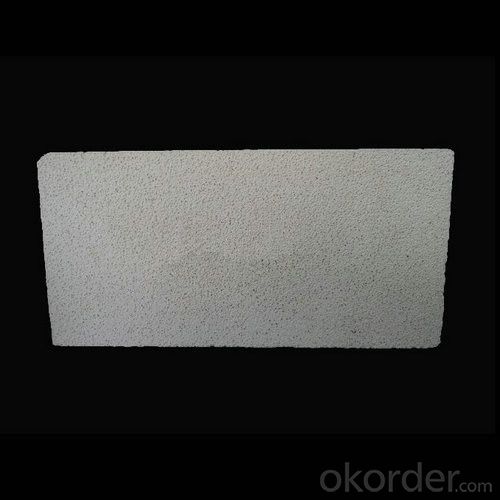
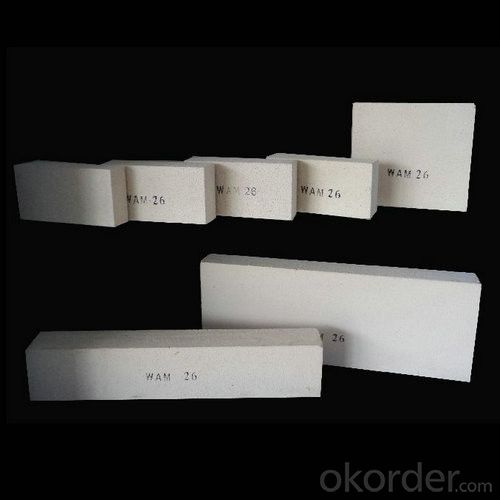
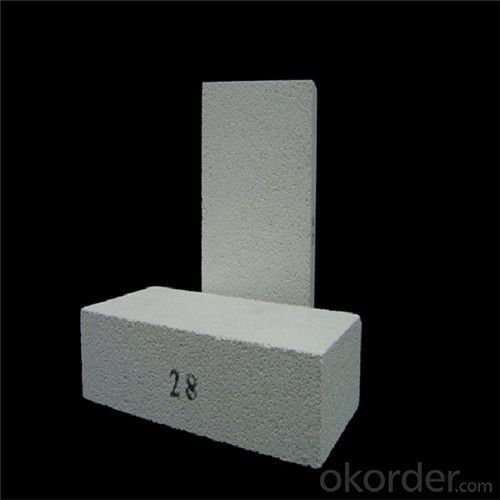
- Q: Are insulating fire bricks suitable for insulation in steam boilers?
- Yes, insulating fire bricks are suitable for insulation in steam boilers. Insulating fire bricks are made from lightweight materials that have high insulating properties, such as alumina or silica. They are designed to withstand high temperatures and thermal shocks, making them ideal for use in steam boilers where there is constant exposure to heat. Insulating fire bricks have low thermal conductivity, which means they can effectively prevent heat transfer, reducing energy loss and increasing the efficiency of steam boilers. Their high insulation properties also help to maintain consistent temperatures within the boiler, preventing heat fluctuations and minimizing the risk of thermal stress and damage. Furthermore, insulating fire bricks are resistant to corrosion and chemical attacks, ensuring their durability and longevity in steam boiler applications. They are also easy to install and can be cut into different shapes and sizes to fit the specific requirements of the boiler. Overall, insulating fire bricks are an excellent choice for insulation in steam boilers due to their ability to withstand high temperatures, low thermal conductivity, and resistance to corrosion. They help in reducing energy loss, improving efficiency, and ensuring the longevity of the boiler.
- Q: Are insulating fire bricks resistant to nitric acid?
- Insulating fire bricks usually lack resistance against nitric acid, a highly corrosive substance that can dissolve various materials, including specific types of fire bricks. Although insulating fire bricks are intended for enduring high temperatures and providing thermal insulation, they may not possess the required chemical resilience to withstand the corroding impact of nitric acid. When anticipating exposure to nitric acid, it is recommended to employ materials specifically engineered for acid resistance in such situations.
- Q: Can insulating fire bricks be used in carbon black reactors?
- Yes, insulating fire bricks can be used in carbon black reactors. These bricks are designed to withstand high temperatures and provide excellent thermal insulation, which makes them suitable for use in carbon black reactors that operate at extreme temperatures.
- Q: Can insulating fire bricks be used in the construction of high-temperature reactors?
- Yes, insulating fire bricks can be used in the construction of high-temperature reactors. Insulating fire bricks are specifically designed to withstand high temperatures, making them suitable for applications in high-temperature environments such as reactors. These bricks have excellent thermal insulation properties, which helps in reducing heat loss and maintaining the desired temperature inside the reactor. Additionally, insulating fire bricks have a high refractoriness, meaning they can withstand extreme heat without significant deformation or damage. This makes them an ideal choice for constructing high-temperature reactors where maintaining a consistent and controlled temperature is crucial for the proper functioning of the reactor.
- Q: What is the typical porosity of an insulating fire brick?
- The specific type and composition of an insulating fire brick influence its typical porosity, which can vary. Generally, insulating fire bricks have a porosity range of 40% to 70%. Porosity refers to the presence of open space or voids within the brick structure, which enhances its thermal insulation properties by minimizing heat transfer. The brick's insulation capability improves as its porosity increases. Manufacturers of insulating fire bricks typically target a specific porosity range to achieve the desired thermal conductivity and insulation efficiency.
- Q: Is it possible to recycle used insulating fire bricks?
- Yes, it is possible to recycle used insulating fire bricks. These bricks can be crushed, ground, or shredded, and then the resulting material can be used as a raw material in the production of new bricks or as an aggregate in construction materials. Recycling used insulating fire bricks helps to reduce waste and conserve resources.
- Q: Can insulating fire bricks be used in low-temperature applications as well?
- In low-temperature scenarios, insulating fire bricks can be utilized to minimize heat loss and maintain a consistent temperature. They are suitable for insulating walls, floors, and roofs of structures or equipment that require temperature regulation, such as cold storage facilities, refrigerators, or freezers. In addition, insulating fire bricks are commonly employed in low-temperature furnaces and kilns to reduce energy consumption and maintain a steady temperature during the heating process. Their exceptional insulation properties ensure that the heat generated within the furnace or kiln remains contained, reducing heat loss and enhancing overall energy efficiency. Moreover, insulating fire bricks are lightweight and easy to handle, making them convenient for various low-temperature applications. They are also resistant to thermal shock and provide outstanding structural stability, guaranteeing long-lasting performance even in demanding environments. Overall, insulating fire bricks can be effectively utilized in low-temperature applications to improve energy efficiency, temperature control, and structural stability.
- Q: Can insulating fire bricks be used in the construction of incineration kilns?
- Indeed, incineration kilns can utilize insulating fire bricks for their construction. These bricks are specifically designed to possess exceptional thermal insulation properties, rendering them highly suitable for scenarios involving high temperatures, such as incineration kilns. With their ability to withstand extreme temperatures, these bricks provide insulation that minimizes heat loss, thereby enhancing energy efficiency and reducing fuel consumption. Moreover, insulating fire bricks are lightweight, easy to handle, and can be readily molded and installed in different configurations, making them an ideal choice for constructing the intricate geometries commonly found in incineration kilns. By employing insulating fire bricks in the construction of incineration kilns, one can bolster their thermal performance, enhance their longevity, and contribute to more streamlined and effective waste management processes.
- Q: Can insulating fire bricks be used in blast furnaces?
- Yes, insulating fire bricks can be used in blast furnaces. Insulating fire bricks are designed to withstand high temperatures and provide excellent thermal insulation. Blast furnaces operate at extremely high temperatures, typically around 1500°C (2732°F), and require materials that can withstand these harsh conditions. Insulating fire bricks are made from lightweight materials such as ceramic fibers, which have low thermal conductivity and can effectively retain heat. This makes them ideal for lining the walls and roofs of blast furnaces, as they help to conserve energy, reduce heat loss, and improve overall furnace efficiency. Additionally, insulating fire bricks can also help to protect the structural integrity of the blast furnace by reducing thermal stress and preventing excessive heat transfer to the surrounding environment. Overall, the use of insulating fire bricks in blast furnaces can contribute to improved performance, energy savings, and extended furnace life.
- Q: Do insulating fire bricks require any special tools for installation?
- No, insulating fire bricks do not require any special tools for installation. They can be easily installed using standard masonry tools such as a trowel and mortar.
Send your message to us
Insulating Fire Brick - GJM Insulation Brick Insulating Brick
- Loading Port:
- Shanghai
- Payment Terms:
- TT or LC
- Min Order Qty:
- 1000 pc
- Supply Capability:
- 100000000 pc/month
OKorder Service Pledge
OKorder Financial Service
Similar products
Hot products
Hot Searches
Related keywords
